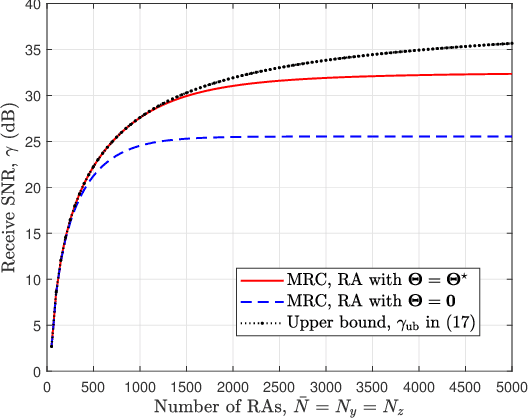Tiantian Ma
Modeling and Optimization for Rotatable Antenna Enabled Wireless Communication
Nov 14, 2024



Abstract:Fluid antenna system (FAS)/movable antenna (MA) has emerged as a promising technology to fully exploit the spatial degrees of freedom (DoFs). In this paper, we propose a new rotatable antenna (RA) model, as a simplified implementation of six-dimensional movable antenna (6DMA), to improve the performance of wireless communication systems. Different from conventional fixed-position antenna (FPA), the proposed RA system can independently and flexibly change the three-dimensional (3D) orientation of each antenna by adjusting its declination angles to achieve desired channel realizations. Specifically, we study an RA-enabled uplink communication system, where the receive beamforming and the declination angles of all RAs are jointly optimized to maximize the minimum signal-to-interference-plus-noise ratio (SINR) among all the users. In the special single-user and free-space propagation setup, the optimal declination angles are derived in closed form with the maximum-ratio combining (MRC) beamformer applied at the base station (BS). In the general multi-user and multi-path setup, we propose an alternating optimization (AO) algorithm to alternately optimize the receive beamforming and the declination angles in an iterative manner. Simulation results are provided to demonstrate that the proposed RA-enabled system can significantly outperform other benchmark schemes.
Intelligent Reflecting Surface-Enabled Anti-Detection for Secure Sensing and Communications
Apr 12, 2024Abstract:The ever-increasing reliance on wireless communication and sensing has led to growing concerns over the vulnerability of sensitive information to unauthorized detection and interception. Traditional anti-detection methods are often inadequate, suffering from limited adaptability and diminished effectiveness against advanced detection technologies. To overcome these challenges, this article presents the intelligent reflecting surface (IRS) as a groundbreaking technology for enabling flexible electromagnetic manipulation, which has the potential to revolutionize anti-detection in both electromagnetic stealth/spoofing (evading radar detection) and covert communications (facilitating secure information exchange). We explore the fundamental principles of IRS and its advantages over traditional anti-detection techniques and discuss various design challenges associated with implementing IRS-based anti-detection systems. Through the examination of case studies and future research directions, we provide a comprehensive overview of the potential of IRS technology to serve as a formidable shield in the modern wireless landscape.
 Add to Chrome
Add to Chrome Add to Firefox
Add to Firefox Add to Edge
Add to Edge